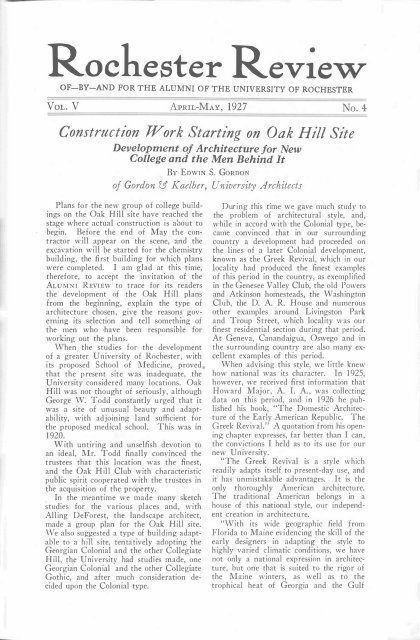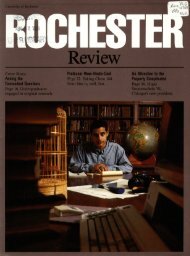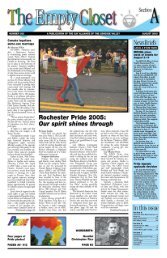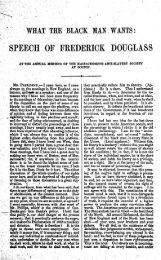Download PDF - University of Rochester Libraries
Download PDF - University of Rochester Libraries
Download PDF - University of Rochester Libraries
You also want an ePaper? Increase the reach of your titles
YUMPU automatically turns print PDFs into web optimized ePapers that Google loves.
<strong>Rochester</strong> Revie-w<br />
OF-BY-AND FOR THE ALUMNI OF THE UNIVERSITY OF ROCHESTER<br />
VOL. V APRIL-MAY, 1927 No.4<br />
Construction Work Starting on Oak Hill Site<br />
Development <strong>of</strong> Architecture for New<br />
College and the Men Behind It<br />
By EDWIN S. GORDON<br />
<strong>of</strong> Gordon E.:f Kaelber, <strong>University</strong> Architects<br />
Plans for the new group <strong>of</strong> college buildings<br />
on the Oak Hill site have reached the<br />
stage where actual construction is about to<br />
begin. Before the end <strong>of</strong> May the contractor<br />
will appear on the scene, and the<br />
excavation will be started for the chemistry<br />
building, the first building for which plans<br />
were completed. I am glad at this time,<br />
therefore, to accept the invitation <strong>of</strong> the<br />
ALUMNI REVIEW to trace for its readers<br />
the development <strong>of</strong> the Oak Hill plans<br />
from the beginning, explain the type <strong>of</strong><br />
architecture chosen, give the reasons governing<br />
its selection and tell something <strong>of</strong><br />
the men who ,have been responsible for<br />
working out the plans.<br />
When the studies for the development<br />
<strong>of</strong> a greater <strong>University</strong> <strong>of</strong> <strong>Rochester</strong>, with<br />
its proposed School <strong>of</strong> Medicine, proved.<br />
that the present site was inadequate, the<br />
<strong>University</strong> considered many locations. Oak<br />
Hill was not thought <strong>of</strong> seriously, although<br />
George W. Todd constantly urged that it<br />
Was a site <strong>of</strong> unusual beauty and adaptability,<br />
with adjoining land sufficient for<br />
the proposed medical school. This was in<br />
1920.<br />
With untiring and unselfish devotion to<br />
an ideal, Mr. Todd finally convinced the<br />
trustees that this location was the finest,<br />
and the Oak Hill Club with characteristic<br />
public spirit cooperated with the trustees in<br />
the acquisition <strong>of</strong> the property.<br />
In the meantime we made many sketch<br />
studies for the various places and, with<br />
Alling DeForest, the landscape architect,<br />
made a group plan for the Oak Hill site.<br />
We also suggested a type <strong>of</strong> building adaptable<br />
to a hill site, tentatively adopting the<br />
Georgian Colonial and the other Collegiate<br />
Hill, the <strong>University</strong> had studies made, one<br />
Georgian Colonial and the other Collegiate<br />
Gothic, and after much consideration decided<br />
upon the Colonial type.<br />
During this time we gave much study to<br />
the problem <strong>of</strong> architectural style, and,<br />
while in accord with the Colonial type, became<br />
convinced that in our surrounding<br />
country a development had proceeded on<br />
the lines <strong>of</strong> a later Colonial development,<br />
known as the Greek Revival, which in our<br />
locality had produced the finest examples<br />
<strong>of</strong> this period in the country, as exemplified<br />
in the Genesee Valley Club, the old Powers<br />
and Atkinson homesteads, the Washington<br />
Club, the D. A R. House and numerous<br />
other examples around Livingston Park<br />
and Troup Street, which locality was our<br />
finest residential section during that period.<br />
At Geneva, Canandaigua, Oswego and in<br />
the surrounding country are also many excellent<br />
examples <strong>of</strong> this period.<br />
When advising this style, we little knew<br />
how national was its character. In 1925,<br />
however, we received first information that<br />
Howard Major, A I. A, was collecting<br />
data on this period, and in 1926 he published<br />
his book, "The Domestic Architecture<br />
<strong>of</strong> the Early American Republic. The<br />
Greek Revival." A quotation from his opening<br />
chapter expresses, far better than I can,<br />
the convictions I held as to its use for our<br />
new <strong>University</strong>.<br />
"The Greek Revival is a style which<br />
readily adapts itself to present-day use, and<br />
it has unmistakable advantages. It is the<br />
only thoroughly American architecture.<br />
The traditional American belongs in a<br />
house <strong>of</strong> this national style, our independent<br />
creation in architecture.<br />
"With its wide geographic field from<br />
Florida to Maine evidencing the skill <strong>of</strong> the<br />
early designers in adapting the style to<br />
highly varied climatic conditions, we have<br />
not only a national expression in architecture,<br />
but one that is suited to the rigor <strong>of</strong><br />
the Maine winters, as well as to the<br />
trophical heat <strong>of</strong> Georgia and the Gulf
















